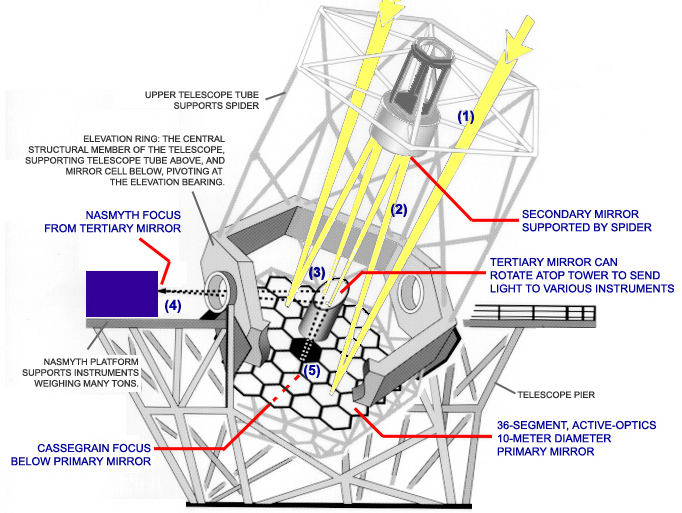Keck Telescope SCIENCE KIT Fact Sheet
Part 2. Keck Telescope Light PathINCOMING LIGHT SHOWN IN YELLOW

Light collected by Keck I and Keck II from the same target can be used in interferometric observations that obtain resolution equivalent to an aperture the size of the seperation between the telescopes, a baseline of 85 meters. To accomplish this feat of optical engineering, lght is picked off each telescope's tertiary mirror, and it follows additional mirrors along the path shown above in red, to the Beam Combining Room in the observatory's basement.
The Keck Interferometer is part of NASA's Origins Program, an effort to find planets beyond our solar system. Visit this site for a thorough tour of the Keck Interferometer and the Keck Observatory.
Go on to Part 3. Keck Telescope Segmented Primary MirrorBack to Part 1. Highlights of The Keck Telescopes| SCI HOME PAGE | CATALOG | HOW TO ORDER | GREAT SPACE LINKS |
|